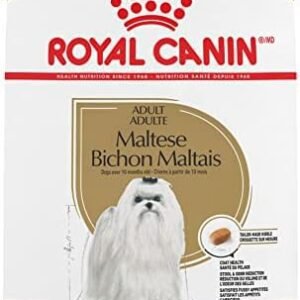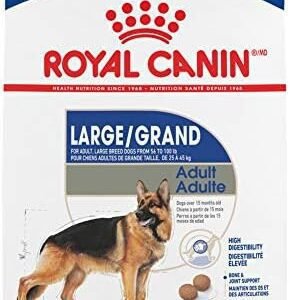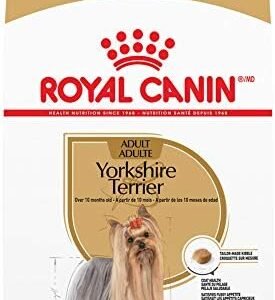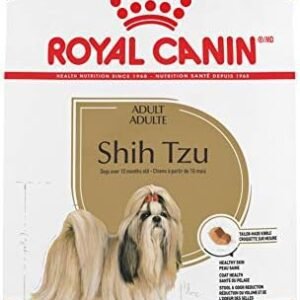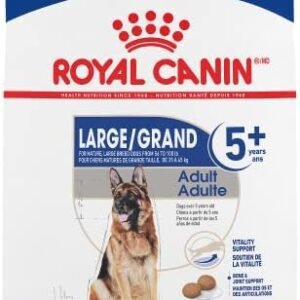Introduction
Are you a fan of the delightful pistachio nuts, those little green shells of salty goodness that make for the perfect snack? If so, you’re not alone. These nuts are a popular treat for many, offering a satisfying crunch and unique flavor. But what about your four-legged friend? Can dogs eat pistachio nuts too?

In this article, we will embark on a journey to uncover the facts and fictions surrounding the canine consumption of pistachio nuts. While these nuts are a favorite among humans, we must delve into the world of doggy diets to determine whether pistachios are a suitable treat for our furry companions. We’ll explore the nutritional content of pistachios, potential health benefits, as well as the risks associated with feeding them to dogs.
Whether you’re curious about sharing your pistachio stash with your dog or just want to be well-informed about canine nutrition, this article will provide you with the answers you need. So, let’s get started and find out, can dogs eat pistachio nuts safely?
Table of Contents
Can Dogs Eat Pistachio Nuts?
If you’ve ever indulged in pistachio nuts, you probably know how irresistible they can be. That unique combination of a mildly sweet and savory taste, along with their fun-to-crack open shells, makes them a delightful snack. As a dog owner, you might be wondering if your furry friend can share in the joy of pistachios. Let’s dive into this nutty topic and uncover whether it’s safe for dogs to eat pistachio nuts.
Are Pistachio Nuts Safe for Dogs?
Pistachio nuts are not inherently toxic or dangerous to dogs. However, their consumption is not without potential risks. Unlike some other human foods that are outright toxic to dogs, pistachios are considered safe, but that doesn’t mean they should become a regular part of your dog’s diet. While some dogs may enjoy the taste of pistachios, moderation is key.
Nutritional Content of Pistachio Nuts
To understand whether pistachio nuts can be a part of your dog’s diet, it’s essential to examine their nutritional content. Below is a table summarizing the key nutrients found in pistachio nuts:
| Nutrient | Amount per 100g |
|---|---|
| Calories | 557 kcal |
| Protein | 20.27g |
| Total Fat | 45.32g |
| Carbohydrates | 27.97g |
| Dietary Fiber | 10.3g |
| Sugars | 7.66g |
| Vitamins and Minerals | |
| Vitamin A | 380 IU |
| Vitamin C | 2.3mg |
| Vitamin E | 2.9mg |
| Vitamin K | 2.7µg |
| Vitamin B6 | 1.7mg |
| Folate | 51µg |
| Calcium | 105mg |
| Iron | 3.92mg |
| Magnesium | 120mg |
| Phosphorus | 490mg |
| Potassium | 1025mg |
| Zinc | 2.20mg |
| Copper | 1.3mg |
| Selenium | 7.0µg |
Pistachio nuts are indeed packed with nutrients, including protein, healthy fats, fiber, and various vitamins and minerals. However, they are also calorie-dense, so portion control is crucial when offering them to your dog.
Nutritional Benefits
While the nutritional content of pistachio nuts makes them appealing, especially for humans, some of these nutrients can provide benefits to dogs as well. Here are a few potential advantages:
Protein: Pistachios contain a good amount of protein, which is essential for muscle development and overall health in dogs.
Fiber: The dietary fiber in pistachios can promote healthy digestion, aiding dogs with gastrointestinal issues.
Vitamins and Minerals: Pistachios provide several vitamins and minerals that contribute to your dog’s overall well-being. For example, vitamin B6 plays a role in enzyme function, while minerals like magnesium, phosphorus, and potassium are important for bone health and fluid balance.
However, it’s important to emphasize that these nutritional benefits can be obtained from dog food specifically formulated to meet their dietary needs. Additionally, pistachios come with certain drawbacks when it comes to feeding them to dogs. Let’s explore those potential negative effects.
Drawbacks and Risks
While pistachios offer some nutritional benefits, they also come with potential drawbacks when it comes to dogs:
High-Fat Content: Pistachios are relatively high in fat. While healthy fats are important for dogs, excessive fat intake can lead to obesity and other health issues. Obesity can put a strain on your dog’s joints and lead to heart and respiratory problems.
Calorie-Dense: The calorie content of pistachios is significant, and excessive calorie intake can contribute to weight gain in dogs.
Salt Content: Many pistachio nuts are salted, and excess salt can be harmful to dogs. High sodium levels can lead to sodium ion poisoning, which manifests in symptoms like excessive thirst, vomiting, diarrhea, and even seizures.
Risk of Choking: Pistachios are small and hard, posing a choking hazard to dogs. The shells can be difficult to digest and might cause digestive problems.
Mold Contamination: Occasionally, pistachios can be contaminated with molds that produce aflatoxins, which are toxic and harmful to dogs. Signs of aflatoxin poisoning include vomiting, diarrhea, and lethargy.
Considering the potential risks and the fact that dog food is carefully formulated to meet their dietary requirements, it’s advisable to be cautious about feeding pistachios to your furry friend. In the next section, we’ll explore how to approach the feeding of pistachios to dogs responsibly.
Caution for Dog Owners
If your dog has consumed a few pistachios accidentally or if you’re considering offering them as an occasional treat, here are some guidelines to follow:
Moderation: Treat pistachios as an occasional indulgence rather than a daily snack. Even a few nuts can add extra calories to your dog’s diet.
Shell Removal: Always remove the shells before offering pistachios to your dog. The shells can be hard to digest and may pose a choking hazard.
Unsalted Nuts: If you decide to share pistachios with your dog, opt for unsalted varieties. Salted pistachios contain high levels of sodium, which can be harmful.
Portion Control: Limit the quantity of pistachios to ensure your dog doesn’t consume excessive calories or fat.
Observation: Introduce pistachios gradually and observe how your dog reacts. If you notice any adverse reactions, such as digestive problems, refrain from giving them pistachios in the future.
In summary, pistachio nuts are not toxic to dogs, and they do offer some nutritional benefits. However, their high-fat and calorie content, potential saltiness, risk of mold contamination, and the danger of hard shells make them a snack to be enjoyed with caution.
In the next section, we’ll dive deeper into potential risks and side effects associated with feeding pistachios to dogs, focusing on allergies and digestive distress. Understanding these risks will help you make informed decisions about your dog’s diet.
How Much Pistachio Nuts Can a Dog Eat?
We’ve established that pistachio nuts can be enjoyed by dogs in moderation, but the key question remains: how much pistachio is safe for your furry companion to consume? It’s essential to understand that moderation is the golden rule when it comes to feeding pistachios to dogs, and it applies to their overall diet as well. Here are some guidelines to consider:
1. The Daily Calorie Limit: As a responsible dog owner, you must be mindful of your dog’s daily calorie intake. Treats, including pistachios, should not make up more than 10% of their daily caloric needs. Knowing your dog’s caloric requirements, which depend on factors such as size, age, and activity level, can help you determine the treat limit. A general rule of thumb is that a healthy treat should not exceed 10% of your dog’s daily caloric intake. Excessive treats can lead to weight gain and potential health problems.
2. Start Small and Observe: When introducing pistachios to your dog’s diet, start with a small piece to gauge their reaction. Some dogs might develop allergies to certain foods, including nuts, so it’s vital to monitor how your dog responds to this new treat. If you notice any adverse effects or signs of allergies like itching, swelling, or gastrointestinal distress, discontinue the pistachios immediately.
3. Shelled and Unsalted: Always prepare pistachios for your dog by removing the shells. As previously mentioned, pistachio shells are hard and can pose a choking hazard. Additionally, unsalted pistachios are the preferred choice as they contain lower sodium levels. High salt content can lead to sodium ion poisoning, which can be dangerous for your dog’s health.
4. Consider Your Dog’s Size and Breed: The size and breed of your dog are important factors when determining the appropriate pistachio portion. A larger dog may be able to tolerate more pistachios than a smaller breed. However, the moderation principle remains consistent; regardless of size, no dog should consume pistachios excessively.
5. Serving Sizes Based on Weight: It’s helpful to establish a guideline for serving sizes based on your dog’s weight. Here’s a rough reference:
- Small dogs (up to 20 pounds): Half a pistachio or less.
- Medium dogs (20-50 pounds): One or two pistachios.
- Large dogs (50+ pounds): Up to three pistachios.
This table is a general guideline. Keep in mind that individual dogs may react differently, and some may be more sensitive to new foods. Always start with a minimal amount and increase it gradually if you’re confident your dog tolerates pistachios well.
In conclusion, it’s important to exercise caution and discretion when feeding pistachios to your dog. While they can be a tasty treat and offer some nutritional benefits, overindulgence can lead to various health issues. By adhering to the principles of moderation and responsible feeding, you can ensure that your dog enjoys an occasional pistachio without compromising their well-being.
The next section will delve into the risks and potential hazards related to feeding pistachio nuts to dogs, including allergic reactions, digestive problems, and the harmful effects of mold-contaminated pistachios. Understanding these risks is crucial for making informed decisions about your dog’s diet.
Risks of Feeding Pistachio Nuts to Dogs
While pistachio nuts can be a tasty and nutritious treat for dogs when given in moderation, there are certain risks and potential hazards that dog owners should be aware of. In this section, we will explore these risks in detail, including food allergies, short-term signs of food intolerance, hazards associated with specific components of pistachio nuts, and the signs and symptoms of adverse reactions.
1. Food Allergies:
Dogs, like humans, can develop allergies to certain foods, including nuts like pistachios. Food allergies are relatively common among dogs and can cause a range of symptoms, from mild to severe. Some dogs may be more prone to food allergies than others. If your dog has not consumed pistachios before, it’s essential to introduce them cautiously. Watch for signs of allergies, which can include:
Itching and Skin Irritation: Excessive itching, scratching, or redness of the skin, paws, or ears.
Swelling: Swelling of the face, particularly around the eyes or muzzle, can be a sign of an allergic reaction.
Gastrointestinal Distress: Vomiting, diarrhea, or other digestive issues can indicate a food allergy.
If your dog exhibits any of these symptoms after consuming pistachios, it is advisable to discontinue feeding them this treat.
2. Short-term Signs of Food Intolerance:
Food intolerance is different from food allergies and typically involves digestive distress rather than an immune system response. While pistachios are not highly likely to cause food intolerance, it’s still possible for some dogs. Short-term signs of food intolerance related to pistachios can include:
Upset Stomach: Dogs may experience digestive discomfort, such as gas, diarrhea, or upset stomach, after eating pistachios.
Dehydration: Digestive issues can lead to dehydration. Watch for increased thirst and reduced urination.
If you observe these signs, it’s best to avoid pistachios in your dog’s diet.
3. Hazards of Specific Components:
Pistachio nuts contain various components that can pose specific hazards to dogs:
Salt: Pistachios, especially those with added salt, can have high sodium content. Excess sodium can lead to sodium ion poisoning, which can cause symptoms like excessive thirst, vomiting, diarrhea, tremors, and, in severe cases, seizures.
Aflatoxins: Pistachios, like other nuts, are susceptible to mold contamination. Mold can produce aflatoxins, which are toxic substances. Ingesting pistachios contaminated with aflatoxins can be harmful to dogs and cause liver damage. While the risk is relatively low, it’s still important to consider.
Hard Shells: The hard shells of pistachio nuts can pose a choking hazard or blockage risk if ingested whole. Make sure to always remove the shells before giving pistachios to your dog.
4. Signs and Symptoms of Adverse Reactions:
It’s crucial to be vigilant and monitor your dog for signs of adverse reactions when introducing pistachios or any new food into their diet. The common signs and symptoms of adverse reactions in dogs after consuming pistachios can include:
Vomiting: Frequent or persistent vomiting is a sign of digestive distress.
Diarrhea: Loose or watery stools can indicate gastrointestinal upset.
Lethargy: Unusual tiredness, reluctance to move, or lack of energy can be a sign that something is wrong.
Behavioral Changes: Watch for changes in behavior, such as restlessness, agitation, or signs of discomfort.
Swelling: Any unexplained swelling, particularly around the face or neck, should be taken seriously.
If your dog displays any of these symptoms after eating pistachios, consult your veterinarian promptly. It’s important to note that, given the potential risks and the need for careful monitoring, pistachios should only be offered as an occasional treat.
In the following section, we’ll explore how to feed pistachio nuts to your dog in a way that maximizes their enjoyment and minimizes the risks. We’ll also share creative methods for incorporating pistachios into homemade treats and snacks that are safe and delicious for your canine companion.
How to Feed Pistachio Nuts to Your Dog and Make It Enjoyable
Pistachio nuts can be a delectable and occasionally safe treat for dogs when offered in moderation and prepared correctly. In this section, we will delve into how you can feed pistachio nuts to your dog in a way that enhances their dining experience. We’ll also explore creative methods for using pistachios to make homemade treats and snacks for your furry friend.
1. Feeding Pistachio Nuts:
When introducing pistachio nuts to your dog, it’s essential to be cautious and considerate of their size, breed, and dietary restrictions. Follow these guidelines to ensure that your dog enjoys pistachios safely:
Start Small: Begin with a small piece of pistachio and observe how your dog reacts. This initial portion will help you determine whether your dog enjoys the taste and doesn’t exhibit any adverse reactions. It also enables you to gauge their tolerance.
Shelled and Unsalted: To minimize risks, only offer shelled and unsalted pistachios. Remove the shells to prevent any choking hazards or gastrointestinal blockages.
Moderation: Pistachios should only be an occasional treat and not a regular part of your dog’s diet. Limit the quantity to avoid excess calorie intake and potential health issues associated with high fat and sodium content.
2. Making Homemade Treats and Snacks:
Pistachio nuts can be used to add flavor and nutritional value to homemade dog treats and snacks. Here are some creative ideas and recipes to enhance your dog’s dining experience:
Pistachio and Blueberry Biscuits:
- Ingredients:
- 1 cup whole wheat flour
- 1/4 cup unsalted pistachios, finely chopped
- 1/4 cup fresh or frozen blueberries
- 1/4 cup unsweetened applesauce
- 1 egg
- Instructions:
- Preheat your oven to 350°F (175°C).
- In a mixing bowl, combine the whole wheat flour, chopped pistachios, blueberries, applesauce, and egg. Mix until you have a dough-like consistency.
- Roll out the dough and use dog bone-shaped cookie cutters to create biscuits.
- Place the biscuits on a baking sheet and bake for 20-25 minutes, or until they are golden brown.
- Allow the biscuits to cool before serving them to your dog.
- Ingredients:
Pistachio Yogurt Parfait:
- Ingredients:
- Plain yogurt (unsweetened, unflavored)
- A few unsalted pistachios, finely crushed
- A drizzle of honey (optional)
- Instructions:
- Spoon plain yogurt into a bowl.
- Sprinkle the crushed pistachios on top.
- Add a drizzle of honey for added sweetness (ensure the honey is safe for dogs).
- Mix the ingredients together to create a pistachio yogurt parfait.
- Serve the parfait in a dog-safe dish as a special treat.
- Ingredients:
Frozen Pistachio Pops:
Ingredients:
– Low-sodium chicken or beef broth
– A few unsalted pistachios
- Instructions:
- Pour low-sodium chicken or beef broth into ice cube trays.
- Drop a single unsalted pistachio into each cube.
- Freeze the trays until the broth is solid.
- Pop out the pistachio-infused ice cubes and serve them as a cooling summer treat.
These homemade treats offer the delightful taste of pistachios while ensuring your dog’s safety and overall enjoyment. Remember to adjust portion sizes based on your dog’s weight and nutritional needs.
By creatively incorporating pistachio nuts into your dog’s meals and snacks, you can enhance their dining experience and add some variety to their diet. However, it’s crucial to monitor their consumption carefully and prioritize their health and safety above all else.
In the next section, we will address some common questions about dogs and pistachio nuts, providing answers and insights to ensure that you have all the necessary information to make informed decisions regarding your dog’s diet.
10 FAQs About Dogs Eating Pistachio Nuts
As dog owners, we want the best for our furry companions and strive to provide them with a safe and healthy diet. With the occasional treat, like pistachio nuts, come questions and concerns. In this section, we’ll address the most common queries and uncertainties related to dogs consuming pistachio nuts.
1. Can dogs eat pistachio nuts?
- While pistachios are not toxic to dogs, they should be consumed in moderation and without shells. Overindulging can lead to digestive problems and other health issues.
2. Are pistachio shells safe for dogs?
- No, pistachio shells are not safe for dogs. They can pose a choking hazard, and the sharp edges can cause internal injuries if ingested.
3. Are salted pistachios safe for dogs?
- Salted pistachios are not recommended for dogs. High sodium content can lead to sodium ion poisoning, causing symptoms like vomiting, diarrhea, seizures, and even death.
4. What are the risks of dogs eating pistachio nuts?
- Risks associated with pistachios include choking on shells, digestive problems, and salt toxicity if salted pistachios are consumed.
5. What are the signs of salt poisoning in dogs?
- Signs of salt poisoning include excessive thirst, frequent urination, vomiting, diarrhea, and, in severe cases, tremors, seizures, and even coma. Contact a veterinarian if you suspect salt poisoning.
6. Can dogs develop allergies to pistachio nuts?
- Allergic reactions to pistachios are rare in dogs, but they can happen. Symptoms may include itching, swelling, hives, and gastrointestinal issues.
7. How many pistachios can I give to my dog?
- Pistachios should be given sparingly as a special treat. Start with a small portion and monitor your dog for any adverse reactions. The appropriate serving size depends on your dog’s size and dietary needs.
8. What should I do if my dog ate a pistachio shell?
- If your dog ingests a pistachio shell, contact your veterinarian. They will advise you on how to proceed based on your dog’s size and the amount ingested.
9. Can I feed pistachio nuts to puppies?
- It’s best to avoid giving pistachio nuts to puppies. Their developing digestive systems are more sensitive, and it’s crucial to prioritize a balanced puppy diet.
10. What are healthy alternatives to pistachio nuts for dogs?
- If you’re looking for safe and healthy treats for your dog, consider alternatives like:
- Carrot sticks
- Apple slices (without seeds)
- Blueberries
- Lean protein (cooked chicken or turkey)
- Commercial dog treats designed for canine consumption
These alternatives provide nutritional benefits without the potential risks associated with pistachio nuts. Always prioritize your dog’s safety and well-being when introducing new foods into their diet.
In the following section, we will summarize the key takeaways from this article and provide some tips for safe and enjoyable treat options for your beloved canine companion. We’ll also encourage you to share your experiences and questions, promoting engagement with our community of dog lovers.
Conclusion
In this comprehensive guide, we’ve explored the question of whether dogs can eat pistachio nuts. While pistachios are not inherently toxic to dogs, there are essential factors to consider before sharing them with your canine companion. The key takeaway is that moderation is crucial when it comes to offering pistachio nuts as an occasional treat. Always ensure that the pistachios are unsalted and without shells, as salted nuts can pose a significant risk to your dog’s health.
It’s important to be aware of the potential risks associated with pistachios, such as choking hazards from shells and the dangers of salt toxicity in salted varieties. While it’s fun to give your dog a treat now and then, remember that pistachio nuts should never replace their primary diet.
For those who are concerned about the potential risks, there are numerous safe and healthy alternatives to pistachio nuts for your furry friend. Consider offering carrot sticks, apple slices (without seeds), blueberries, or small pieces of lean protein like cooked chicken or turkey.
We encourage you to prioritize your dog’s well-being and health while exploring new treats and snacks for them. Every dog is unique, and what works for one may not work for another. Be attentive to your dog’s individual needs and consult your veterinarian if you have any specific concerns about their diet.
Now, we want to hear from you. Do you have any questions or comments about feeding pistachio nuts to your dog? Have you ever given your dog pistachios? How did they like it? Share your experiences and join the conversation with fellow dog lovers in the comment section below. You can also connect with us on our social media pages for more tips and insights on keeping your canine companion happy and healthy.




















